People
Back to School: 10 Famous Art Professors We Wish We Had as Teachers in College
Sarah Sze leads the pack.
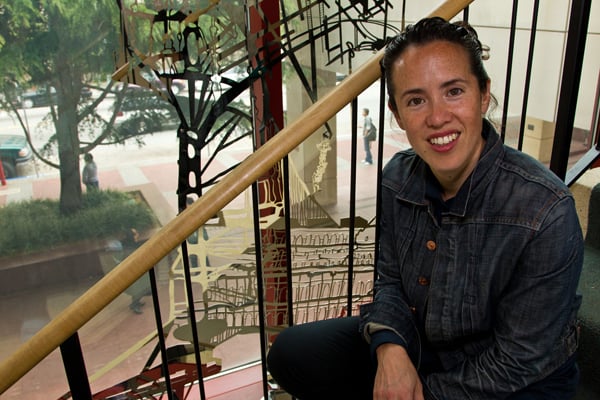
Sarah Sze leads the pack.

Lauren Palmer


Photo: Courtesy artandeducation.net.
For many art students across the country, school is already in full swing. Whether this time of year brings happiness or misery can depend largely on the types of classes that you take and who teaches them.
Great instructors have the ability to use mundane material and explain it in such a way that it becomes riveting. These brilliant minds inspire and challenge their students, creating space for independent thinking and crafting of individual art practices. And beyond these points, some instructors are just cool.
For those buying textbooks and art supplies—or wishing that you were—we give you our list of professors that we wish we had in college.

Sarah Sze
Photo: © Susan Merrell.
1. Sarah Sze at Columbia University: New York
Along with Rirkrit Tiravanija, Sze is also a professor of visual arts at the Ivy League institution. She teaches the MFA Advanced Printmaking course in the spring.
“She’s a fantastic artist, a great teacher and we are proud to have her on our faculty,” Columbia dean Carol Becker said in a 2013 statement on the school’s website. The artist’s work was a hit at the 2013 Venice Biennale; this week, potential students can spy her show opening at Tanya Bonakdar.
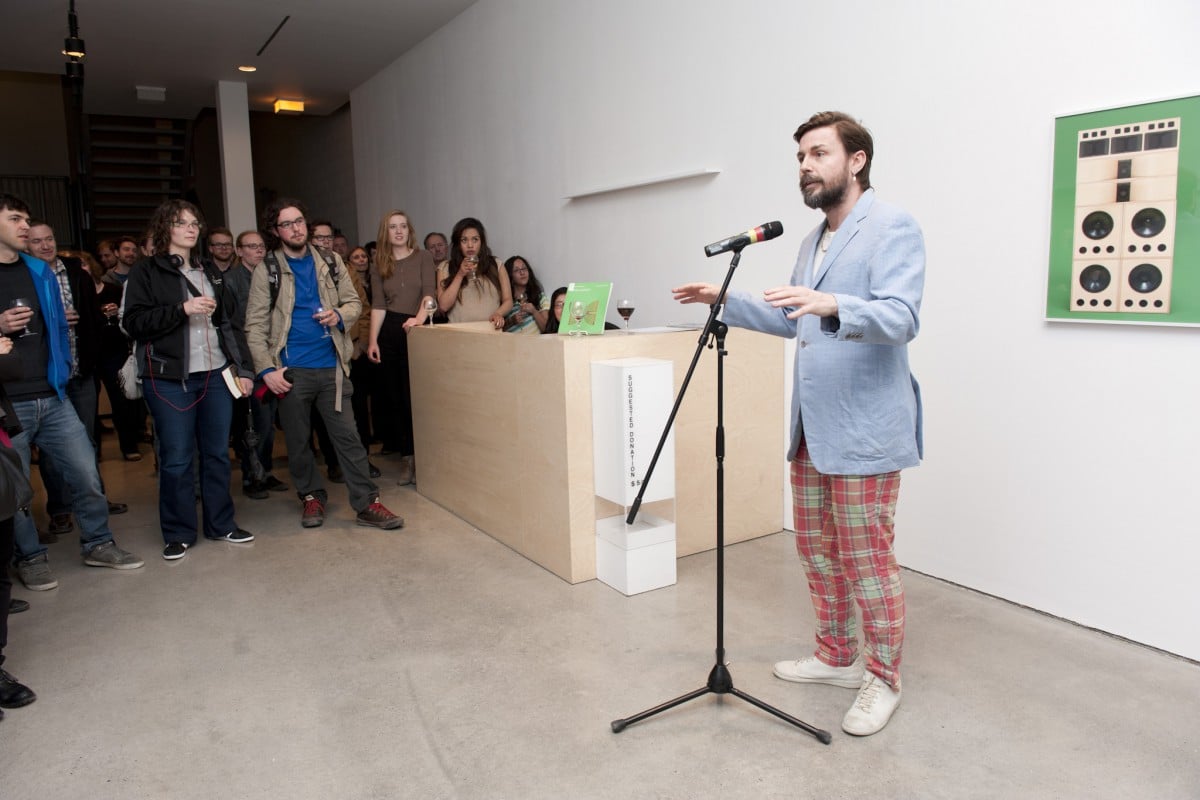
Mark Leckey lectures at the Banff Summer Arts Festival in 2012. Image: Alexa Hubley for the Banff Center.
2. Mark Leckey at Goldsmiths College: London
The Turner Prize winner is a reader (or professor for those familiar with the North American collegiate system) in Fine Art at the college famous for its YBAs. The curriculum for the MFA program includes studio seminars, lectures, and critical studies.
In Art in America, Michael Sanchez wrote about Leckey’s shift from a video practice to one that is rooted in performance—a result that the artist credits to his role as a teacher. Sanchez posits “[Leckey’s] performances deal with questions that every pedagogue should consider: What is the information that I transmit, and how does it become knowledge? How does my own subjectivity, if I can call it that, transmit information? How does the very structure of transmission, transmit back to me?”
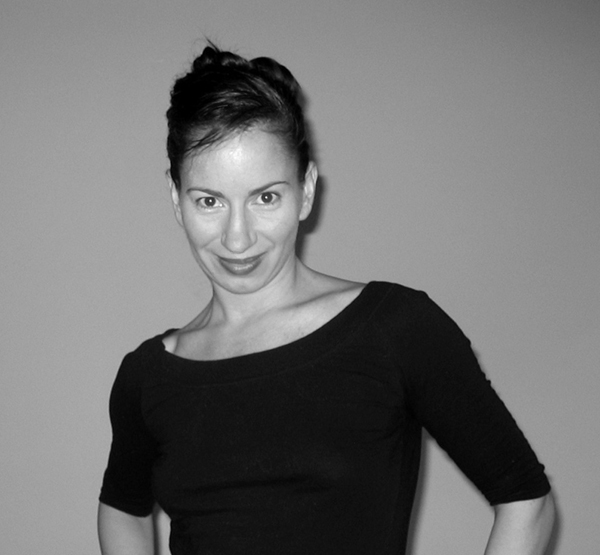
Andrea Fraser
Photo via: newmedia-art.org.
3. Andrea Fraser at UCLA
As a professor of New Genres (which includes installation, video, film, audio, performance, digital, hybrid and emerging art forms), Fraser teaches in the art department with other luminaries, such as Barbara Kruger and Catherine Opie. In both her “Beginning” and “Advanced” courses, Fraser attempts to keep the dialogue open.
In an interview with Alex Segade at BOMB magazine, Fraser says, “Everyone finds audience participation to be a nightmarish concept, despite the fact that participation in an art context, particularly in social practice, is always considered positive.”
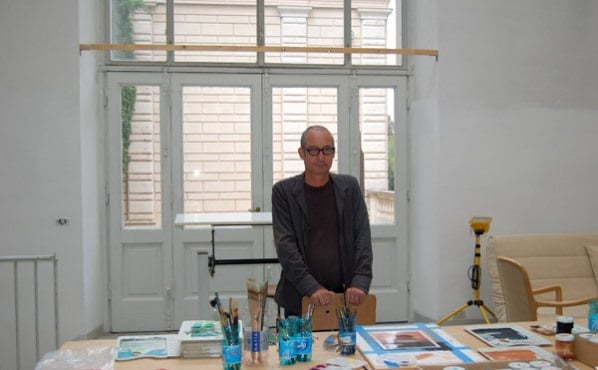
Dike Blair. Image: Time Out New York.
4. Dike Blair at RISD: Providence
As a senior critic at the Rhode Island School of Design, Blair oversees artists in the process of creating final projects on courses such as Graduate Painting Studio Thesis, Painting Degree Project, and Painting Workshop.
Michael León, a recent graduate of the MFA class at RISD, praised Blair’s pedagogic style in Anne Prentnieks’s article for art & education. “He was really invested, he really cared, and he felt very responsible for [our development]. He would always stop into my studio and say, ‘check out this artist,’ and I noticed that for every student he always suggested great artists and works to reference. He’d say, ‘I thought of you when I saw this show in Chelsea.’ He was always really helpful.”

Peter Doig at the Scottish National Gallery, Edinburgh, July 2013. Photo courtesy of the Telegraph from Michael Werner Gallery New York and London.
5. Peter Doig at the Kunstakademie Düsseldorf
The Scotsman, who is our most expensive living British artist at auction this year, is a professor of malerei (painting) at the German art academy. In an interview in Purple magazine, Doig says he chooses difficult students, in a twist on the usual course selection process.
Doig recalls noticing the difference in painting styles between British and German artists when he started teaching: “There’s a level of finish in British art that’s very, very different from German art. When I was invited to come to Düsseldorf, I looked around the academy and I walked down the halls and I was quite shocked by the level of openness in the painting. There was a kind of abjectness about the way things were made. I found that quite difficult at first, but then I was very excited by it,” he said in an interview with Canadian Art.
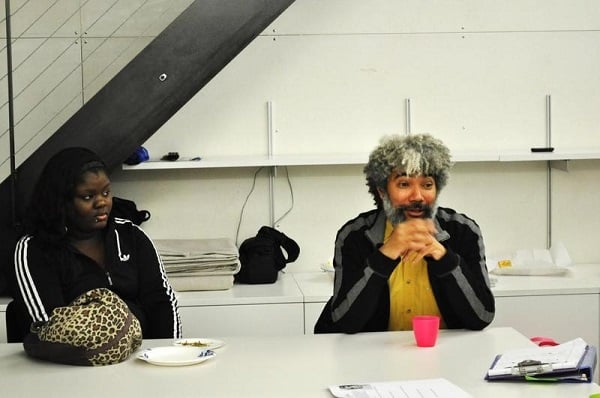
Artist Fred Wilson visits the Whitney Studio for a brainstorming session with Youth Insights Leaders, March 2013.
Image: Courtesy of Whitney Museum; photograph by Correna Cohen.
6. Fred Wilson at School of Visual Arts: New York
As a graduate student at the School of Visual Arts, you may be taught by Fred Wilson as part of your studio requirement, where he’ll provide guidance for your practice through one-on-one meetings. Or Marilyn Minter might even critique your work in the MFA program.
In a 2014 video lecture at SVA, Wilson presents his early work to show how an artist’s practice can evolve from “student” to “professional.”
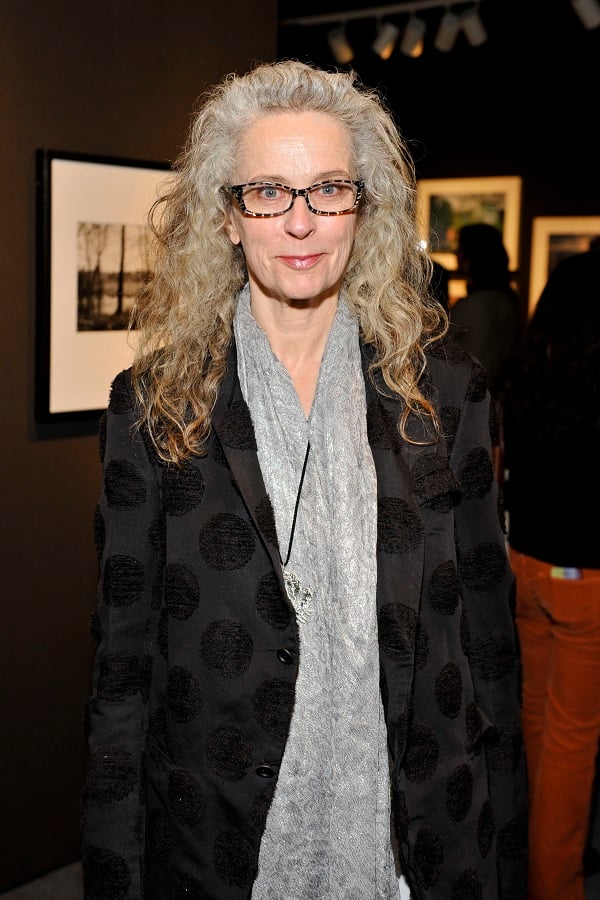
Kiki Smith
Photo: RYAN MCCUNE/ PatrickMcMullan.com
7. Kiki Smith at New York University
Those enrolled at New York University could benefit from Smith’s tutelage at the Steinhardt school, where she teaches in its print studio.
When asked in an interview with Christine Kuan of Oxford Art Online if Smith feels that “women are finally receiving the recognition that they deserve,” the artist responded by saying, “The whole culture’s changed; people who have been excluded fight for inclusion and then they are included. Sometimes we can act smug that things are fab here, but you can go somewhere else and there are no women teachers or professors or artists represented culturally, and that can be frustrating. That will all change with the amount of population movement.”
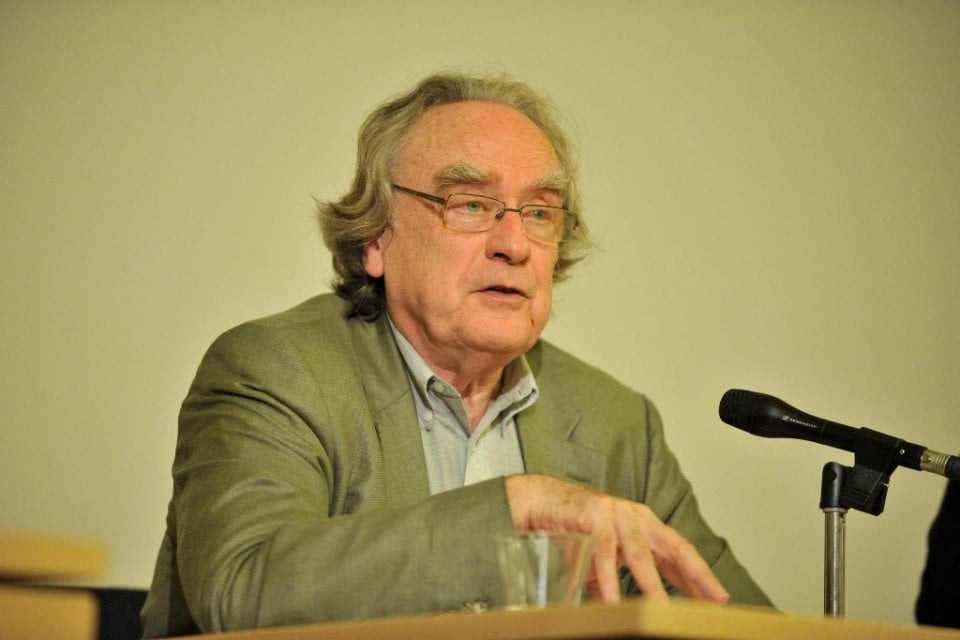
Benjamin Buchloh. Image: © Niels Leiser.
8. Benjamin Buchloh at Harvard University: Cambridge
If you’re more interested in writing about art than producing it, studying under one of October‘s editors could prove invaluable. This academic year, he is teaching American and European Art, 1945-75, and Photography in Weimar Germany and in Exile, 1919-1959.
When Buchloh was named a professor of modern art in Harvard University’s Faculty of Arts and Sciences in 2005, William C. Kirby remarked that the art historian’s “gifts as a teacher are without peer; many of the most impressive young art historians now studying postwar art are his former students.”
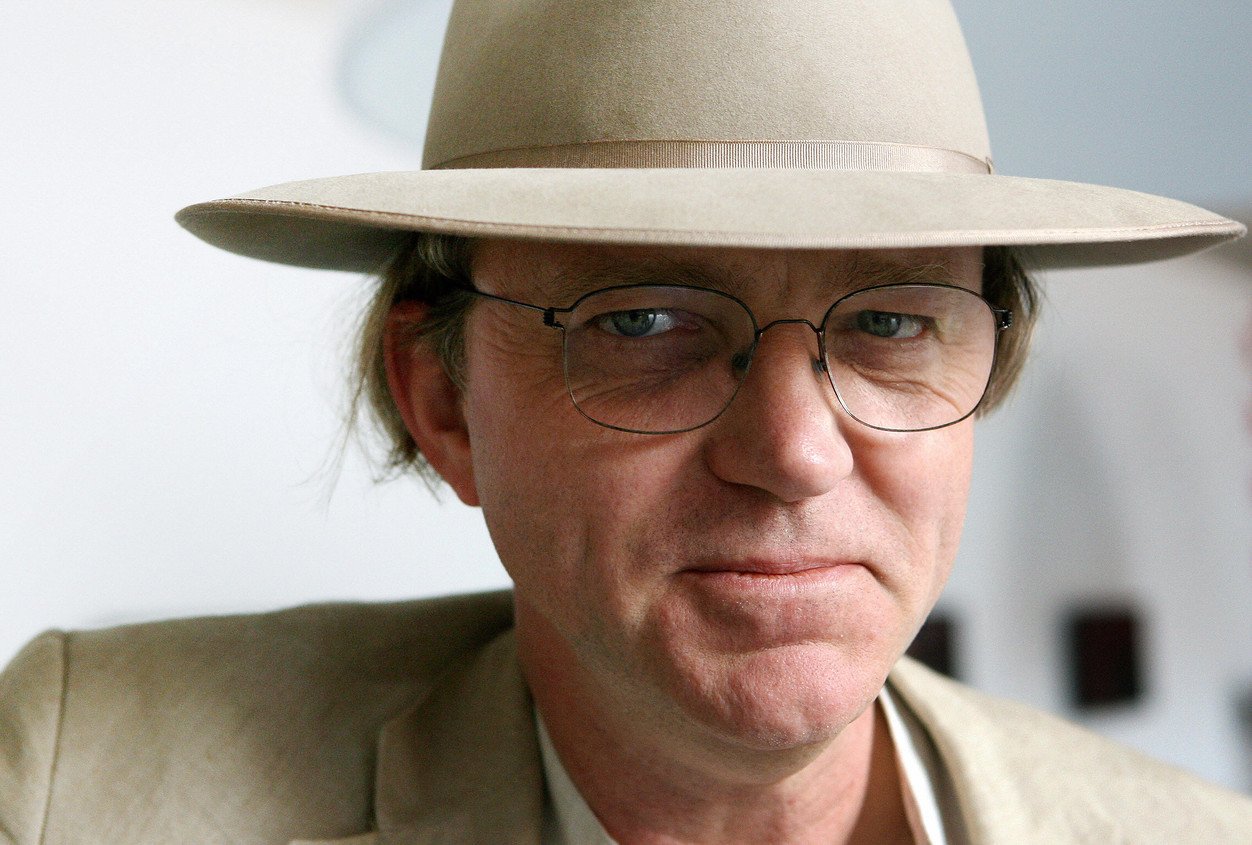
Robert Storr. Image: ALBERTO PIZZOLI/AFP/Getty Images)
9. Robert Storr at Yale University: New Haven
Though this Ivy’s School of Art has no shortage of premier faculty and visiting artists, students have the opportunity to learn the crafts of art practice, curating and criticism under the school’s Dean. Storr teaches courses in drawing, critical practice, and special projects this school year.
In his incendiary interview with Brainard Carey for Yale Radio this past May, Storr relays one of the merits of attending art school in the first place: “One of the things is that in art school you meet a certain cohort of your contemporaries and very often they become very important people for the rest of your life…It is a group where the struggles and the difficulties that you faced are shared in certain ways.”
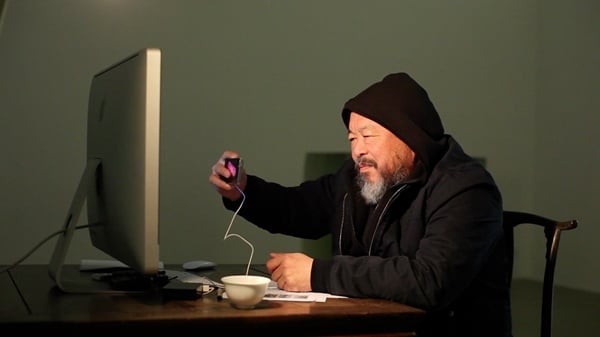
10. Ai Weiwei at Univeristät der Künste Berlin
Now that the Instagram-friendly activist artist has been given back his passport, Ai Weiwei may teach at the University of the Arts in Berlin (Universität der Künste Berlin) this October, according to a press release translated by Karen Archey at e-flux.
With regards to his teaching philosophy, the artist is quoted in Agence France Presse (AFP) as stating, “I think art is changing.” He continued, “It’s no longer just forms or shapes, but rather related to philosophy or socio-political views. So I think that’s a very interesting direction, and it is a direction I am interested to share with students.”
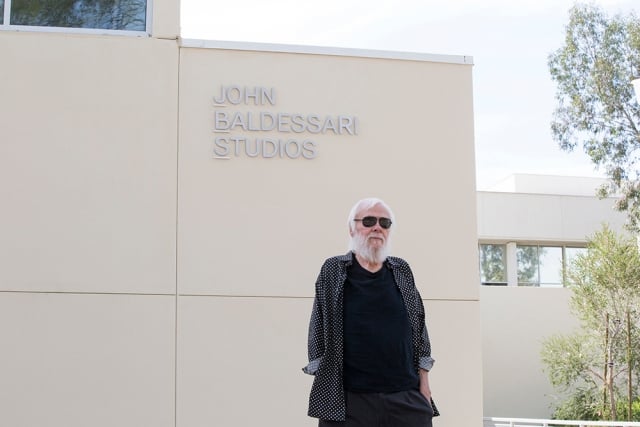
John Baldessari.
Photo: Rafael Hernandez, courtesy of CalArts.
Bonus: John Baldessari at CalArts: Valencia
We would have loved to take Baldessari’s class at CalArts, where he taught from 1970-1986. The dictum “Make No More Boring Art” was embedded in the curriculum, as were some other curious decisions.
“We had some unusual courses,” Baldessari tells Christopher Knight in a 2011 interview for the online magazine East of Borneo. “I think one of the most bizarre ones that comes to mind was a course on joint rolling.” Now, students can work at the institution’s new $2 million building, christened the John Baldessari Art Studios.